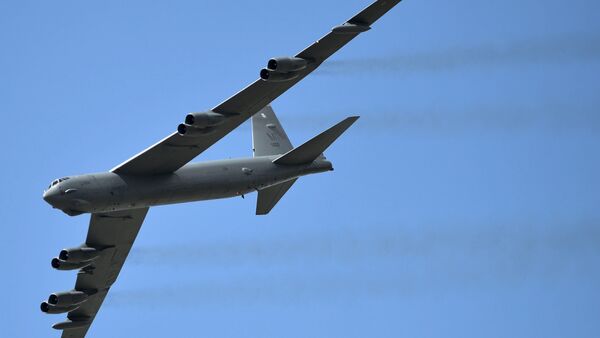After much talk, the Air Force finally put out a request for proposals on May 19 to replace the Pratt & Whitney TF-33 turbofan engines that power the United States’ largest strategic bomber.
According to the solicitation, the winning company will receive an “Indefinite Delivery/Indefinite Quantity (ID/IQ) supply contract” that includes 608 new engines in several batches and an indefinite number of spares, as well as maintenance support, including the replacement process itself. Due to be awarded in June 2021, the solicitation notes that engine buys under the contract would continue for another 17 years, until 2038.
The Air Force has said it intends to operate the B-52 until at least 2050, at which time the planes will be close to a century old, having been built between 1955 and 1962. The newest engines on a B-52 are at least 35 years old, as Pratt & Whitney stopped making the TF-33 in 1985.
As of June 2019, the USAF has 58 Stratofortress bombers in active service and 18 in reserve; each B-52 would need eight such engines.
According to Defense News, Pratt & Whitney plans on submitting its PW800 engine, built for several models of private business jet. General Electric’s GE Aviation plans to submit its CF34-10 engine to the competition, another airliner engine widely used by Bombardier; and Rolls-Royce will submit its F130 engine, also used in commercial airliners but unique among the pack in that it was intended to power the failed Nimrod MRA4, a maritime patrol aircraft the British Royal Air Force cancelled in 2010.
As Flight Global recounted, the Pentagon has revisited the issue of re-engining the B-52 multiple times. Initially deferred in the early 1980s when it was believed the Cold War would continue and huge numbers of B-1B Lancers and B-2 Spirit bombers would replace the B-52s before the century was out, the issue came up again in 1996, 2004 and 2007, each time being deferred for lack of an acceptably cost-beneficial plan. The present initiative began in 2014, when the Air Force began looking for fuel efficiency tips from the commercial aviation sector.
New engines aren’t the only way the Pentagon is trying to keep its B-52 fleet relevant into the mid-21st century: other new upgrades include an active electronically scanned array (AESA) radar and even having the plane’s battlefield role reinvented as a “missileer,” using its incredible lifting capacity to tote around dozens of long-range cruise missiles and hypersonic weapons.
A similar third life is also being explored for the USAF’s B-1B Lancer, which has proven capable of being modified to carry at least 40 of the Pentagon’s new long-range missiles. However, in 2017, Gen. John Hyten, then the commander of US Strategic Command but now the vice chairman of the Joint Chiefs of Staff, observed that without specifically the long-range standoff weapon (LRSO) nuclear cruise missile, "you don’t have the B-52 as a viable platform.”

